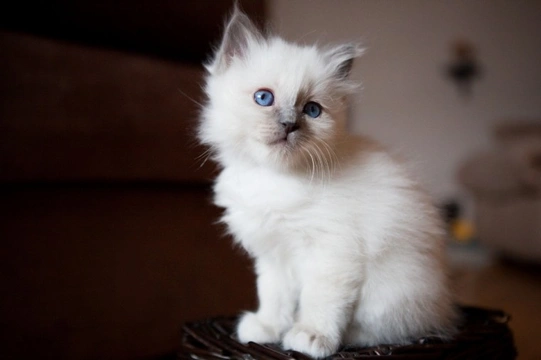
10 interesting facts about the Birman cat breed for prospective kitten buyers
The Birman cat breed is one of the longest established cat breeds of all, and yet not one of the most commonly seen here in the UK. Falling in 17th place in the popularity rankings of pedigree or widely recognised cat breeds based on the number of adverts for cats of the breed placed on Pets4Homes each year, Birmans are reasonably rare albeit still widely known and appreciated.
The Birman is one of a number of longhaired and very beautiful cat breeds that prospective kitten buyers might be considering choosing for their next pet, and unlike the best-known longhaired cat breed, the Persian, one with a normal, non-brachycephalic muzzle and so that is not prone to breathing difficulties.
This is a cat breed with a lot to recommend it and with a long and interesting history, but like any cat breed, one with minus points as well as pluses. If you’re considering buying a Birman kitten, finding out the breed’s backgrounds and core traits first is very important.
With this in mind, this article will share 10 interesting facts about the Birman cat breed to get you started. Read on to learn more.
The Birman is a GCCF recognised pedigree cat breed
The Birman cat breed is recognised as a pedigree and eligible for pedigree registration with the GCCF, the UK’s governing body for pedigree cat breeds.
This means that Birman cats can take part in cat shows, and that any pedigree Birman will have a traceable ancestry and lineage going back several generations.
Birman cats are longhaired
The Birman is a longhaired cat breed, which makes their coats very beautiful to look at as well as very tactile to touch. However, longhaired coats are also quite high maintenance compared to short coats, and so prospective Birman buyers should bear this in mind as you will need to dedicate some time every day to brushing and grooming your cat to prevent knots and matting.
However, their coats are single layered and so, not as challenging to care for as some other longhaired cat breeds.
Birmans are colourpoint cats
The Birman cat coat is a colourpoint one, which means that their bodies are white or cream and their limbs, faces and tails coloured; but their paws and toes are white or cream once more, which is the signature of the breed and one of the easiest ways to tell them apart from other colourpoint longhaired cat breeds.
Birmans are reasonably large and muscular
The Birman is medium to large in size, and they’re fairly muscular but not particularly stocky. Their long coats can make them look rather larger still, but their coats are silky, fine and a little fluffy rather than very bulky.
Birmans are highly social and very affectionate
The Birman breed is one that is very personable, likes company, and is highly affectionate. They tend to be happier with other feline housemates than most other cat breeds, tending to accept newcomers without a huge fuss even when adult.
Birmans are also notable for generally getting on well with other species too, like pet dogs and rabbits that are calm and behave appropriately.
The Birman is the sacred cat of Burma – not the Burmese cat breed!
The Birman breed’s history is a long one, going back to origins as temple companions for priests in the North of Burma. However, the exact origin of the breed is unknown, although we do know that they’ve been around in their current form for a long time, and are very well established.
The Birman is actually the sacred cat of Burma – not the Burmese, as you might fairly expect!
Birman cats aren’t hugely expensive to buy compared to some other pedigree breeds
The Birman cat is one of the less costly pedigree cat breeds to buy, compared to the norms across all pedigree breeds in the UK.
The average asking price for pedigree Birman kittens in the UK at the time of writing (2019) is £500 each, and for non-pedigrees, £407. You can fin all Birmans for sale here.
The level of genetic diversity within the Birman breed is cause for concern
Based on a 2008 study into the genetic diversity found in pedigree cat breeds, the Birman is the breed that has the lowest level of genetic diversity of all, representing a comparatively small population of unrelated cats of the breed available for mating matches.
This in turn means that the risk of hereditary health defects within the breed as a whole is high.
This has an impact on the breed’s health and longevity
The main hereditary health issue found within the Birman breed is feline hypertrophic cardiomyopathy, which is also the most common heart condition found in cats as a species overall.
However, feline hypertrophic cardiomyopathy still occurs within the Birman breed at a higher frequency rate than that of most other breeds, which is something all prospective Birman buyers need to bear in mind when considering buying a cat of the breed.
Fashion designer Karl Lagerfield is a fan of the breed, and the Birman features in some of his most iconic designs!
Popular fashion designer Karl Lagerfield was a huge fan of the Birman cat breed, and owned a Birman of his own called Choupette up until Lagerfield’s death earlier on this year. Choupette features heavily as a design element of many of Lagerfield’s signature product lines!



